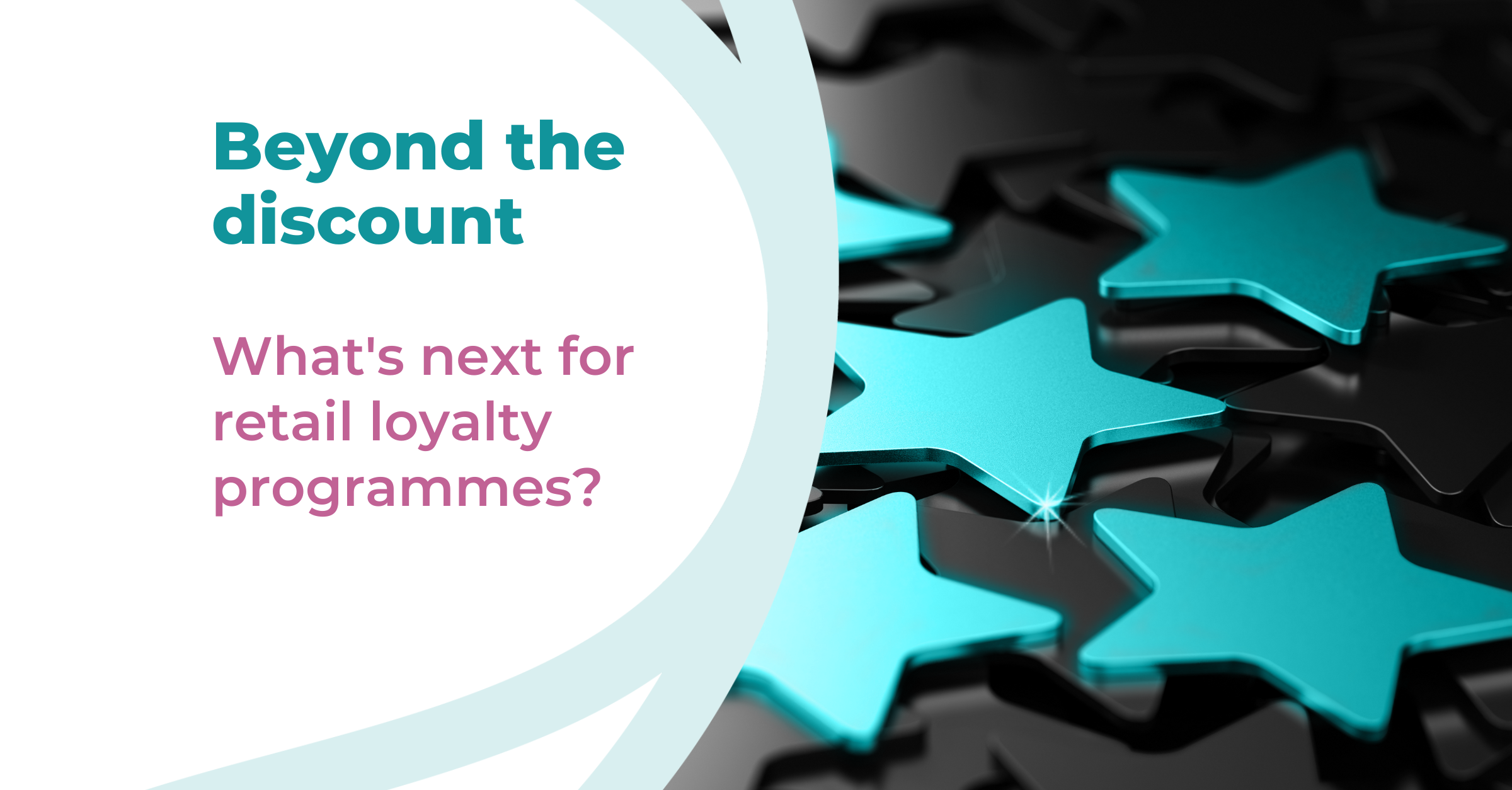Loyalty: What's next?
How to deliver a tier one loyalty experience as a tier two retailer – and why it’s more important than ever.
By Martyn Cole, Director of Commercial Operations at Retail Directions
Loyalty schemes have been back under the spotlight of late, after both Boots and Tesco, two of the flagship leaders in the retail loyalty sphere revised their schemes.
The changes didn’t go down well.
But what they did do was highlight once again how passionate consumers are about loyalty schemes done right – and why it’s more important than ever to have a solid, unified loyalty programme in place if you are a tier-two, or tier-three retailer wanting to deliver a tier-one loyalty experience.
Loyalty schemes are back in vogue for two particular reasons. For the customer it’s about getting real value from a brand – whether that’s savings or experience – that will make the shopping experience better, and ideally cheaper, amidst the cost-of-living crisis.
For retailers and brands, the cost-of-living crisis is also a key reason to drive sales hard through all channels; retaining existing customers and also attracting new ones – either by making the loyalty schemes irresistible to new customers or incentivising existing customers to recruit friends and family.
In the current environment, retailers are fighting for every sale they can get so where should retailers who don’t have a loyalty scheme in place start if they want to compete on the same level as the tier-one giants?
Set requirements and objective
One of the most crucial factors is not to rush into a loyalty programme. It’s crucial to get it right the first time, because if the customer offer is wrong and you need to change it, for instance, it’s losing you money or isn’t engaging your customers effectively enough, then it can have the polar opposite of creating the loyalty you were trying to achieve.
A poorly devised strategy can not only lose you money, but also lose your customer trust and loyalty and you may not get a second chance to win it back.
Although the strategy might be led by marketing it’s often then boomeranged to IT and the wrestling between marketing’s requirements and what IT can deliver can cause further friction.
It’s therefore essential to have planned your loyalty offering thoroughly, setting clear requirements and objectives for the project at the start. Look at what your competitors are doing and aim to do it better.
Make minor revisions only if required
That doesn’t mean your loyalty strategy should be static. Existing schemes should be reviewed since you can’t continue to offer what you did before if you want to truly engage customers. But this has to be done with the same laser-sharp focus and planning as a launch. In June 2023, Ikea announced it was increasing the rewards for customers with a relaunch of its Family Rewards scheme while Morrisons has also relaunched its scheme with additional benefits.
Align your requirements and objectives with the brand
The requirements and objectives you’ve defined need to be aligned with your brand so that they suit your actual customer base, but also the business as a whole. Here a single view of the customer is vital to allow for loyalty programmes that offer tailored promotions to be built to better target customers.
Ensuring the best customer experience to turn customers on rather than turn them off
Ensuring the best customer experience is essential since loyalty schemes in their most basic form are about incentivising your customers to share their data with you. The customer needs to feel rewarded for doing that. If they don’t, they may not share such data at all and the very reason for your scheme’s existence has failed.
Managing a loyalty programme and system effectively
Ensuring the operational side of your loyalty programme is watertight is vital for success. This needs to cover everything from security to ease of set-up and how customers will actually use the programme.
Are sign-ups quick and easy, whether online or in-store?
Are the rewards worth it and is the business able to clearly answer the customer question of ‘what’s in it for me?’
This is especially important given the current environment when loyalty is more fragile than ever, and any point of frustration and friction will be a turn-off for the customer. Integration across the business is essential with operations teams working together to design and manage a credible offer. But they need to align the web and in-store experiences around loyalty too.
Proving its value
While the obvious reward might be what the customer gains, for the retailer the value comes from what they can do with the data that the customer has shared. And this is another crucial element that can get overlooked.
Having the right reporting and management tools in place is essential to measure the success of your loyalty programme and will also give you the warning needed that tweaks are required to ensure it remains relevant.
Ultimately, the loyalty of your customers isn’t a given and the fact that tier-one giants are renewing their focus on their loyalty schemes illustrates their valid role in customer retention and acquisition.
Building customer relationships and loyalty is vital in tougher times and if it’s not already a focus for your business it needs to be – just make sure you are delivering something that works for both you and your customers.
ENDS
The Retail Directions loyalty tool is part of the Retail Directions retail management platform. Find out more here.





%20(600%20x%20400%20px)%20(1600%20x%20500%20px)%20(1200%20x%20500%20px)%20(1200%20x%20700%20px)%20(1200%20x%20700%20px)%20(1600%20x%20500%20px)%20(1600%20x%20700%20px)%20(1600%20x%20500%20px)%20(1600%20x%20838%20px)%20(1600%20x%20500%20px)%20(950%20x%20500%20px)%20(950%20%C3%97%204.png?width=352&name=Copy%20of%20Untitled%20(1600%20x%20500%20px)%20(600%20x%20400%20px)%20(1600%20x%20500%20px)%20(1200%20x%20500%20px)%20(1200%20x%20700%20px)%20(1200%20x%20700%20px)%20(1600%20x%20500%20px)%20(1600%20x%20700%20px)%20(1600%20x%20500%20px)%20(1600%20x%20838%20px)%20(1600%20x%20500%20px)%20(950%20x%20500%20px)%20(950%20%C3%97%204.png)
.png?width=352&name=Consumer%20Trends%202022%20(4).png)